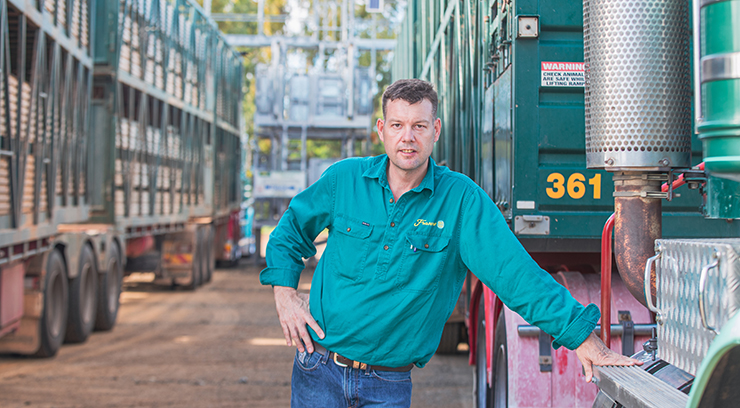Truck safely in the extremes
03 March 2022

From floods to fires, 2022 has already presented the extremes of climatic challenges, creating widespread disruption to the national livestock supply chain.
According to Frasers Compliance Manager and TruckSafe* Animal Welfare Vice Chair, Athol Carter (pictured), it’s been a year like no other for transporting livestock.
“We’ve certainly had widespread disruption across Australia on a scale never seen before, now we’re back in a La Niña phase,” Athol said.
“With the vast distances that we travel as transporters, the weather can instantly change – what’s happening at Winton might be totally different to the weather at Windorah.”
Communication is key
The extreme nature of current climatic conditions reinforces the need for clear communication between producers and their transporters.
“The more you communicate and talk to each other, the easier the job is,” Athol said.
“Transporters can’t see a thousand kilometres in front of us, and we don’t know for sure the night or afternoon before what it’s actually like on the ground.
“If you’ve made a truck booking in advance and there’s imminent weather, please be contactable – it’s all about working together and sharing the right information from the start.”
Stay alert
Athol said producers also need to be particularly vigilant about monitoring local routes for their transporters, to alert them to events such as flash flooding.
“Unfortunately, we can’t always rely on weather or route planning tools due to the lag time of information upload about closed roads, so we really need to have those open lines of communication with properties for alternative routes,” Athol said.
“Sometimes producers need to be our eyes and ears locally, and we’ll make a call on you to run the roads and check things for us prior to going there – or even during – those predicted rainfall periods.”
Plan ahead
If weather events and extreme heat or cold conditions do arise while transporting livestock, Athol said it’s essential producers and transporters prepare for the unexpected.
“You should have an emergency plan should the worst-case scenario pop up, especially for finished cattle and sheep going to processing out of the paddock and feedlots,” he said.
“This could include taking them to a nearby saleyard facility enroute to spell and feed the livestock, or even for processors and meat marketers to divert consignments to different processing sites (intrastate or interstate).
“Transporters also need to take into account driver rest, amenities and refuelling facilities if the journey is significantly increased due to the weather.
“If the last few years have taught us one thing, it’s that we need to be adaptable.”
Preparing livestock
Athol said preparing livestock for their journey in line with MLA’s Is the animal fit to load? guide is also key to ensuring animals reach their destination safely.
“It’s all about prior preparation and ensuring only animals fit for transport have been selected for the journey,” Athol said.
“Well prepared animals travel better and are prone to less stress-related or animal welfare issues – if in doubt, leave it out.”
If it’s flooded, forget it
If floods or large rainfall events like those expected in the coming wet season do occur, Athol recommends delaying transport of livestock where possible.
“We’re losing too many lives each year with people driving through flood waters, and livestock are better off in the paddock than stuck on the road,” Athol said.
“The last thing anyone wants is to destroy roads and no one can afford to have trucks stuck for weeks on end – it impacts the productivity, efficiency and viability of the entire supply chain.”
*TruckSafe is the only freight industry accreditation which addresses human safety factors and animal welfare. It underpins industry programs such as Meat Standards Australia and Livestock Production Assurance to maintain supply chain integrity.


